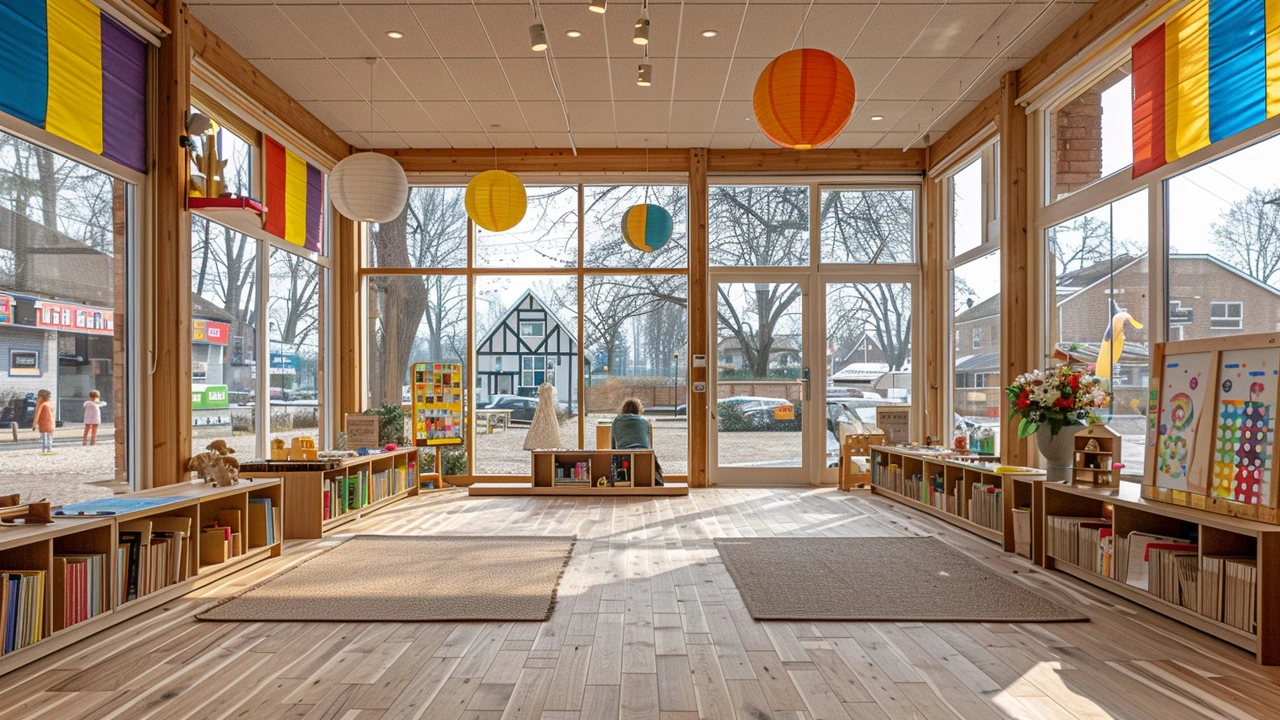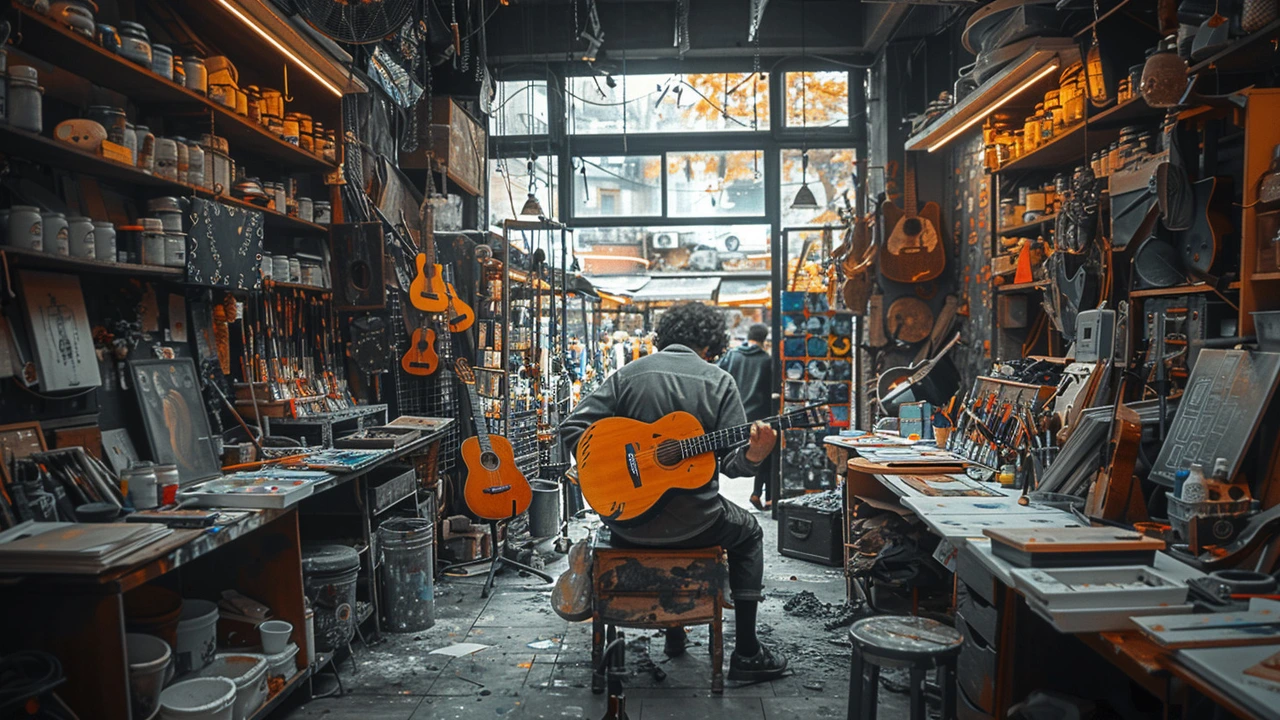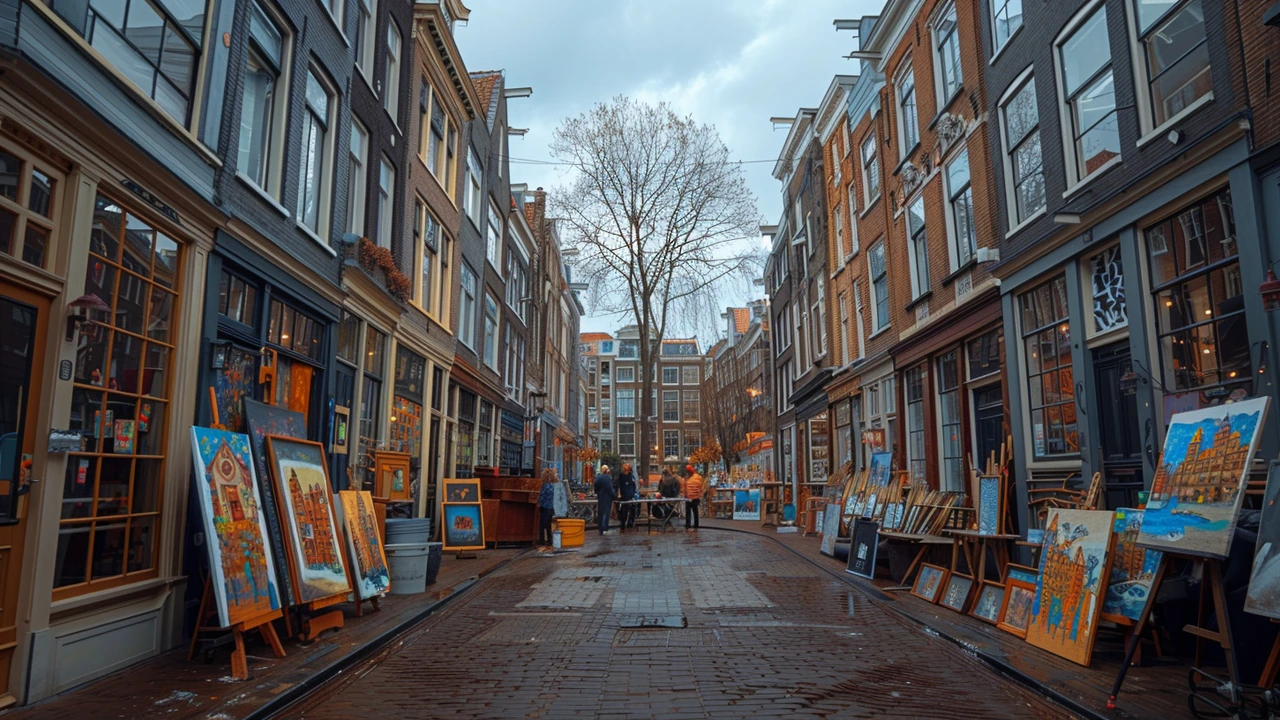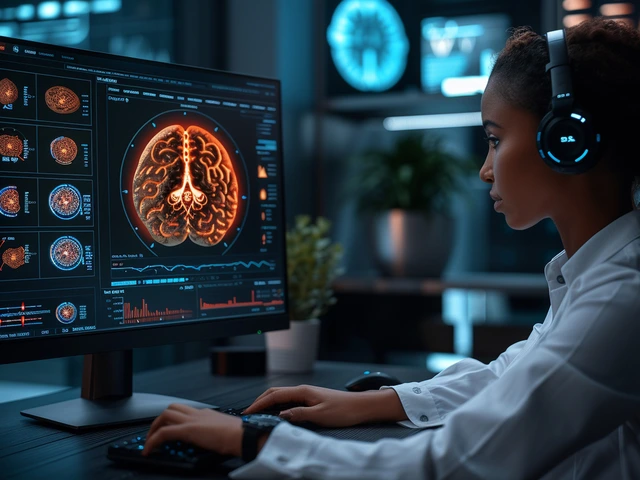
Imagine a world where you can express your deepest emotions without uttering a word. That's the magic of creative arts therapies. Blending the realms of art and psychology, these therapies use creative processes to foster emotional growth and healing. Whether you're painting your feelings or moving your body to a rhythm, these therapies offer a unique and effective route to mental well-being.
For those starting out, understanding the different types and their benefits can be a great first step. Let's dive into this colorful world and explore how creative arts can become a vital part of your mental health journey.
- What are Creative Arts Therapies?
- Types of Creative Arts Therapies
- Benefits of Creative Arts Therapies
- Getting Started with Creative Arts Therapies
What are Creative Arts Therapies?
Creative arts therapies are a unique blend of creativity and psychological practices that help individuals explore and express emotions. These therapies employ various art forms such as music, dance, drama, and visual arts as tools for healing and personal growth. The idea is to use the creative process to tap into emotions that might be difficult to express through words. By engaging in these artistic activities, people can improve their mental health and emotional well-being.
The origins of creative arts therapies date back to the mid-20th century. During this time, mental health professionals began to recognize the therapeutic potential of the arts. Today, these therapies are practiced globally and have become a vital part of holistic approaches to mental health care. They are often used in hospitals, schools, rehabilitation centers, and private practices.
Recent studies have shown that creative arts therapies can significantly reduce symptoms of anxiety and depression, enhance self-esteem, and boost overall quality of life. Music therapy, for example, has been found to lower stress levels and improve mood. Similarly, art therapy enables individuals to express themselves in a non-verbal manner, making it easier to process complex emotions.
“Art speaks where words are unable to explain.” – That statement from an art therapist emphasizes the power of creativity in healing.
A key benefit of these therapies is their ability to cater to people of all ages and backgrounds. Whether you are a child dealing with trauma or an adult coping with chronic illness, creative arts therapies offer versatile and accessible methods for support and therapy. These therapies focus on various types of artistic expression, making them adaptable to individual needs and preferences.
The foundation of creative arts therapies is the belief that art can be a bridge to the inner self. By tapping into the creative part of the brain, individuals gain insights and develop coping strategies. It is not necessary to have any artistic skills to benefit from these therapies. The focus is on the process, not the final product. Participants are encouraged to express their thoughts and feelings freely without fear of judgment.
Many therapists incorporate multiple art forms into their sessions, often combining them to create a more holistic approach. For instance, a session might include drawing followed by a movement exercise, providing a multi-sensory experience. This integrative approach can enhance the therapeutic effect and offer a more comprehensive understanding of an individual's emotional state.
One of the most significant aspects of creative arts therapies is their adaptability. Whether conducted in groups or individually, the sessions are tailored to meet specific therapeutic goals. This adaptability ensures that the therapy is as effective as possible, addressing the unique needs of each participant. As awareness grows, more people are discovering the transformative power of creative expression in their journey toward mental health.

Types of Creative Arts Therapies
Creative arts therapies come in various forms, each harnessing a different aspect of the creative process to promote healing and self-understanding. From visual arts to movement, these therapies offer diverse paths to explore one's inner world.
Art Therapy
Art therapy involves using visual arts like drawing, painting, and sculpting to foster self-expression and communication. This type of therapy can be especially helpful for individuals who find it challenging to articulate their thoughts and feelings verbally. By creating art, one can uncover deep emotions and insights that might otherwise remain hidden. Art therapy is widely used in settings ranging from schools to senior centers, emphasizing its versatility and broad applicability.
Music Therapy
Music therapy uses the power of music to improve emotional, cognitive, and social functioning. This can involve listening to music, playing instruments, or composing songs. Music has a unique ability to evoke emotions and memories, making it a powerful tool for healing. Studies have shown that music therapy can reduce symptoms of depression and anxiety, improve mood, and even help with physical rehabilitation. The American Music Therapy Association highlights that music therapy can be effective for people of all ages, including those with developmental disabilities, mental health issues, and neurological disorders.
Dance/Movement Therapy
Dance/movement therapy (DMT) incorporates body movement to enhance emotional, cognitive, and physical integration. This form of therapy is based on the premise that the mind and body are interconnected, and movement can express and heal psychological issues. DMT can be particularly beneficial for those dealing with trauma, as it allows for the release of pent-up emotions and the development of a stronger mind-body connection. According to the American Dance Therapy Association, DMT is effective in reducing stress, enhancing self-esteem, and improving communication skills.
Drama Therapy
Drama therapy leverages theater techniques to foster self-expression and personal growth. By engaging in role-play, storytelling, and improvisation, individuals can explore different aspects of their identity and experience new ways of thinking and behaving. Drama therapy can be particularly useful for children and adolescents, providing a safe space to work through complex emotions and social challenges. It is also beneficial for adults dealing with issues like addiction, trauma, and relationship difficulties.
Each type of creative arts therapy offers unique benefits, and the best choice depends on individual preferences and needs. Engaging in these therapies can unlock new levels of self-awareness and emotional well-being, creating a richer, more fulfilling life experience.

Benefits of Creative Arts Therapies
Engaging with creative arts therapies can offer a range of benefits that extend beyond traditional talk therapy. These therapies provide a unique avenue for personal expression, which can be especially beneficial for individuals who find it challenging to articulate their feelings verbally. Through the use of art, music, dance, drama, and writing, people can tap into their emotions in a non-threatening way and explore their innermost thoughts and feelings.
One of the significant advantages of creative arts therapies is their ability to reduce stress and anxiety. By immersing yourself in the creative process, you create a safe space where you can focus on the present moment, which can be a powerful form of mindfulness. This act of creation can trigger the release of dopamine, a neurotransmitter associated with pleasure and reward, leading to an improved mood and enhanced sense of well-being.
Another important benefit is the improvement in self-esteem and self-awareness. When you engage in creative activities, you connect with aspects of yourself that you might not access regularly. This self-discovery can be empowering, fostering a greater sense of self-worth and confidence. Moreover, observing tangible progress in your creative projects can provide a sense of accomplishment and reinforce positive self-perception.
Emotional and Psychological Benefits
Creative arts therapies can offer profound emotional and psychological benefits. For instance, expressing feelings through art can be cathartic, allowing individuals to process and release pent-up emotions. This release can be particularly helpful for those dealing with trauma or grief, offering a way to confront and work through difficult experiences in a controlled and supportive environment.
Additionally, these therapies can enhance emotional resilience. By regularly participating in creative activities, individuals learn to navigate and manage intense emotions, which can translate into better coping mechanisms in daily life. The creative process encourages flexibility, problem-solving, and adaptability, which are crucial skills for emotional resilience.
"The aim of art is not to represent the outward appearance of things, but their inward significance." - AristotleThis quote by Aristotle encapsulates the core of creative arts therapies. It’s about discovering the deeper meanings and emotions that lie beneath the surface, offering a holistic approach to mental health.
Social and Interpersonal Benefits
Creative arts therapies can also enhance social and interpersonal skills. Group therapy sessions, for example, encourage collaboration and communication among participants. Sharing creative projects with others can foster a sense of community and connection, reducing feelings of isolation and loneliness. For children and adolescents, these therapies can be particularly beneficial in developing social skills and building peer relationships in a supportive setting.
Moreover, observing and interpreting others' artistic expressions can enhance empathy and understanding. Engaging in discussions about art, music, or movement can help individuals gain insights into others' perspectives and emotions, fostering a deeper sense of community and shared experience.
The benefits of creative arts therapies are vast and varied, making them a valuable tool for mental health and well-being. Whether you're looking to reduce stress, enhance self-esteem, or build better relationships, these therapies offer a creative and expressive outlet that can lead to significant personal growth and healing.

Getting Started with Creative Arts Therapies
So you've decided to explore the world of creative arts therapies. There's an exciting and transformative journey ahead. Before diving into the creative process, it's essential first to understand how to approach these therapies effectively. The initial step involves identifying which type of therapy resonates the most with you. Art therapy, music therapy, dance/movement therapy, and drama therapy, each offers unique ways to express emotions and work through experiences. Taking the time to research and reflect on which medium you feel most drawn to can make a significant difference in your therapeutic experience.
Connecting with a qualified therapist is the next crucial step. Look for professionals with credentials from reputable associations, such as the American Art Therapy Association or the American Dance Therapy Association. These experts are trained not only in their respective arts but also in psychological theory and methods. A therapist will guide you through structured sessions, helping you tap into your creative subconscious and interpret the artistic outputs meaningfully. It is worth noting that some therapists offer remote sessions through video calls, making it accessible no matter where you are.
For those who prefer a more self-directed approach, starting with simple creative exercises at home can be equally beneficial. Begin by allowing yourself space and time free from distractions. Gather your materials – whether that's paints, musical instruments, or just a quiet room to dance in. The goal is less about creating a perfect work of art and more about expressing and exploring your feelings. Regular practice is key. Setting aside just 30 minutes a few times a week can establish a routine that fosters emotional release and self-discovery.
It's also helpful to keep a journal of your thoughts and feelings both before and after your creative sessions. This can provide insight into your emotional state, track your progress, and highlight patterns or themes in your creations. Some people find it beneficial to combine different types of creative therapies. For example, you might start with a dance session to loosen up and then move on to drawing or painting. This multi-modal approach can offer deeper insights and more varied means of expression.
As renowned music therapist Dr. Clive Robbins once said, "Music is a therapy. It is a communication far more powerful than words, far more immediate, far more efficient." This couldn’t be truer when it comes to understanding the impact creative arts can have.
Joining workshops or groups can also provide motivation and a sense of community. Many organizations offer art therapy workshops, where you can learn alongside others and share experiences. This collective environment can be incredibly supportive and provide new perspectives on your creative journey. Lastly, don't be afraid to experiment and let your intuition guide you. Creativity is about exploration, and there's no right or wrong way to engage with these therapies. Trust your process and be patient with yourself. With time and openness, creative arts therapies can become a powerful tool for personal growth and healing.





